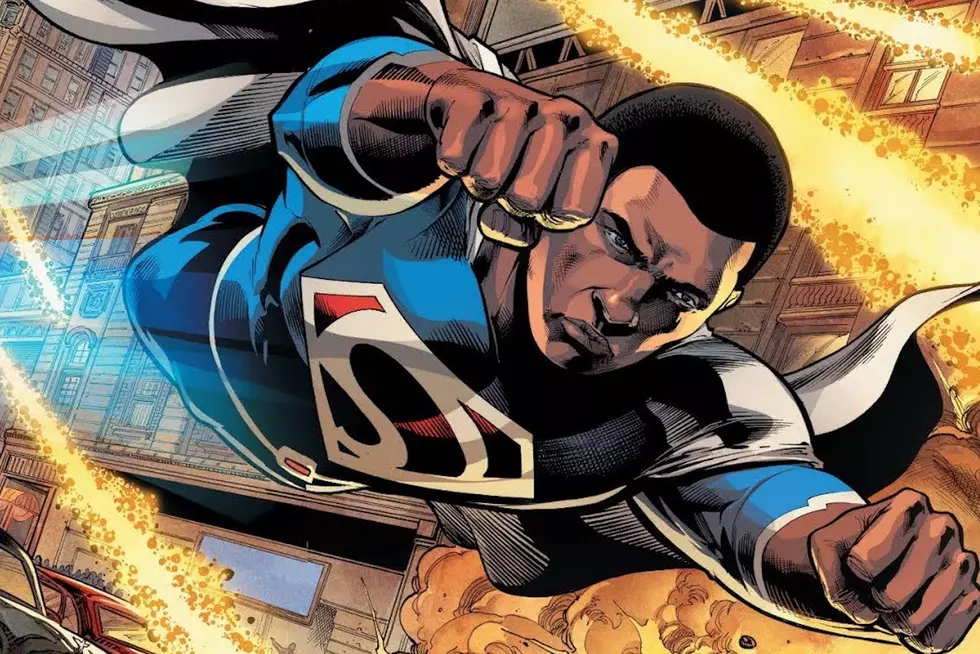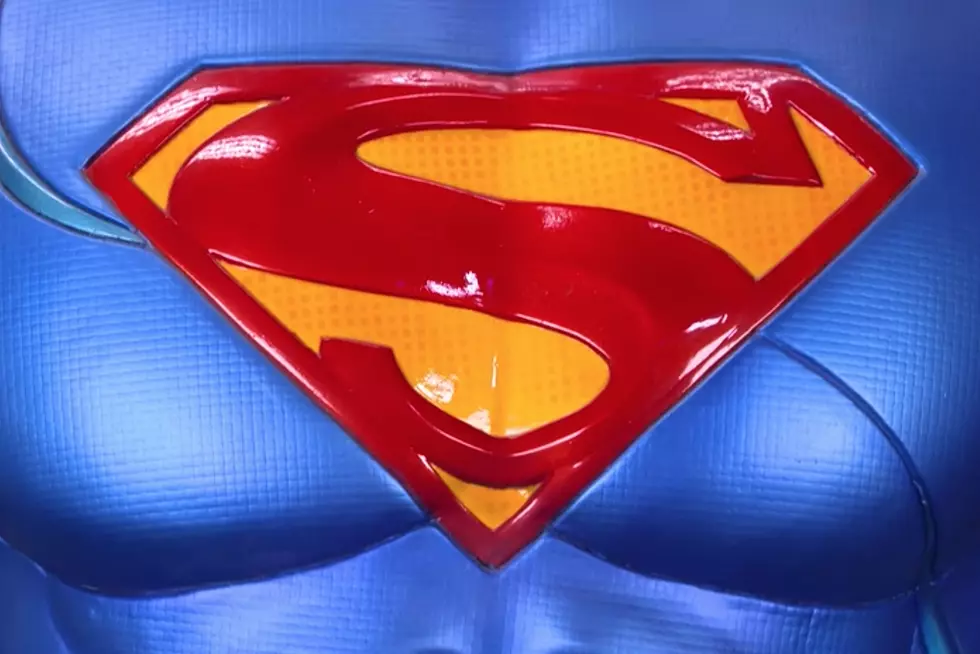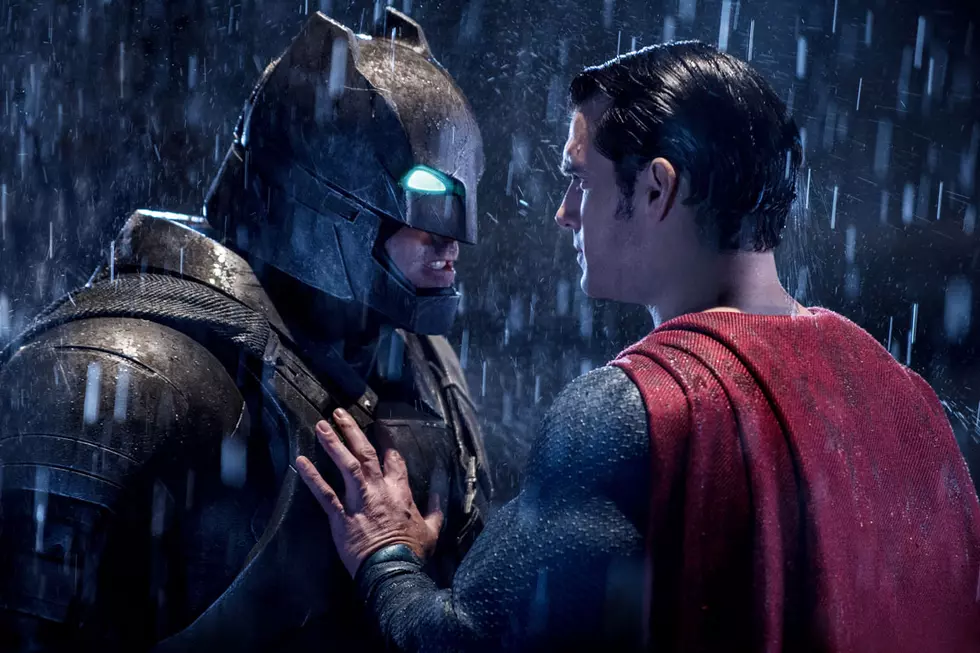
Give ‘Em Elle: The Original Big Screen Hero
Welcome to Give ‘Em Elle, a new weekly column that hopes to bridge the gap between old school comics fandom and the progressive edge of comics culture. This week I’ve been thinking about the comic adaptations of the past, long before the current superhero boom. There have been superheroes on our screens almost as long as there have been superheroes in our comics, and some of them stand head and shoulders above the crowd.
It was this tweet from ComicsAlliance's own Katie Schenkel that got me thinking about what came before. That first Christopher Reeve Superman movie came out in 1978, so we’re going back a while here, to before even I was born. Fortunately I spent most of my childhood obsessing over things from before I was born, and half my adulthood studying them.
First of all, you can’t leave out the TV Trinity of DC heroes. George Reeves was the Superman of the ‘50s, fighting a lot of small-time hoods and the occasional asteroid. Adam West was the Batman of the ‘60s, and still my favorite Batman, but there’s no shortage of writing all over the internet about how great that show was. And of course Lynda Carter was the Wonder Woman of the ‘70s, whose show only predated the Superman movie by a couple of years and was ongoing when it came out.
I also want to give a shout-out to 1968’s Barbarella, Roger Vadim’s big screen adaptation of Jean-Claude Forest’s erotic science fiction comics, starring Jane Fonda. Barbarella deserves a place in the discussion of great comic book films on the basis of the costumes and production design alone. But being adapted from French erotica places it in a very different category from American superhero stories, and thus perhaps it should remain a topic for another time.
The first live-action superhero was Tom Tyler in the 1941 cliffhanger serial The Adventures of Captain Marvel. A lot of screen superhero tropes originated here, and the production holds up surprisingly well. Tyler is the embodiment of the Golden Age Captain Marvel, and the scene where Billy Batson meets the wizard Shazam is pretty much perfect. The flying effects (which involve a dummy speeding along a wire) are still striking, especially compared to everything between here and 1978.
Unfortunately, the plot of The Adventures of Captain Marvel involves the exploration of Egypt, and more than a little racism creeps in. It’s not as bad as the 1943 Batman serial (there’s an inscrutable Japanese mad scientist in that one; it’s a rough time), but it’s still a problem. On the other hand, if you’re curious about the superhero serials of the 1940s, Captain Marvel is the one to check out. But do yourself a favor and watch a chapter at a time. With a cliffhanger and a recap coming every twenty minutes, trying to watch it like a movie is a recipe for boredom.
My absolute favorite big screen superhero adaptation of the 20th century also began in 1941. Paramount Pictures had licensed the rights to make Superman animated cartoons, and they approached Fleischer Studios, the animators behind Betty Boop and Popeye, to create them. Legend has it that the Fleischers didn’t really want to make Superman, so they deliberately asked for a budget so high that they were sure it would be rejected, but it wasn’t. And thus each Superman cartoon was made for $100,000, four times the cost of a typical Popeye short.
The combination of that unprecedented budget and the expertise of the Fleischers (who had spent the ‘30s making some of the most innovative cartoons of all time) is visible in all nine of the Superman shorts they made, starting with 1941’s eponymous Superman.
No villains from the comics appear in these cartoons, but of course in 1941 the idea of recurring arch nemeses was still quite new (all superhero tropes were). However, the tropes of the supervillain are frequently on display, starting with the death ray-building, city-blackmailing Mad Scientist of the first short. He even has a comical blackbird sidekick, whose facial expressions are the strongest thread connecting this to the comical cartoons Fleischer Studios had previously specialized in.
There was nothing comical about Superman himself, however. Each short starts with him as Clark, usually in the Daily Planet office with Lois Lane and an unnamed Perry White. Something happens in the city, Lois and Clark go out to investigate, and inevitably Superman is needed. The plots are simple and the characterizations are close to nonexistent, but of course that was true of the comics of the time as well. What matters is that each short sets up a seemingly unbeatable problem, and then Superman beats it by being Superman.
Lois is an impressive figure in her own right in these cartoons, just as she was in the comics. In Superman, she flies a one-seater airplane to find the Mad Scientist’s base. In The Mechanical Monsters, she climbs inside one of the robots, and then clings for her life when it tries to dump her out on the way home. And in Billion Dollar Limited, in a scene you may have glimpsed as a Tumblr gif set, she picks up a machine gun and fires it from a moving train at the villains’ car. While it's true that Superman often has to rescue Lois, it’s not because she’s a damsel; it’s because she’s completely fearless and happens to live in a world full of dangers that only Superman can stop.
Superman and Lois are voiced by Bud Collyer and Joan Alexander, respectively, the same actors who were playing the characters simultaneously on radio. That’s why when Clark changes into Superman, he always says “This looks like a job…” in Clark’s reedy voice and then deepens into Superman’s heroic tone to continue, “…for Superman!” On the radio nobody could see Clark slipping into a phone booth, and that vocal transformation was all the change audiences needed to know that Superman was on the scene. That phone booth that Superman changes clothes in, by the way, originated in these cartoons.
Each of the Fleischer shorts offers Superman a new sort of obstacle. The fourth cartoon, The Arctic Giant, is my favorite in that regard, because Superman fights Godzilla. I mean, not really Godzilla, who wouldn’t even exist for another twelve years, but a huge bulky dinosaur that seems a closer relative to Godzilla than to anything that actually lived in prehistoric times. The museum worker who unwittingly sets the creature free is a middle-aged bald man, and I’ve always chosen to believe that this is Luthor’s one appearance in these cartoons, going undercover to deliberately let lose the only creature that might prove a match for the man of steel.
The visuals are consistently the best part of the Fleischer cartoons. Superman’s costume is in darker colors than it would be in later animation, which contrasts beautifully with the lasers and lightning coursing around (and occasionally through) him. The character designs and shadowy art deco buildings would be a huge influence on Bruce Timm’s designs for Batman: The Animated Series, which in turn influenced every DC cartoon that came after it.
Fleischer Studios made nine Superman cartoons before going out of business and being restructured as Famous Studios, whose work never quite measured up. Famous made eight Superman shorts of their own, which are less impressive and in a couple of instances more racist than the Fleischers’ work. Because these cartoons are all public domain now, they’re not always put in order, or even well-labeled as to who made what.
But if you’re looking to check out the best of the lot, you can’t go wrong with Superman (sometimes retitled The Mad Scientist), The Mechanical Monsters, or The Arctic Giant. They were all made before Superman was four years old, but they feel as much like the character as anything that comes out today.
More From ComicsAlliance









